How to Dehydrate Your Sourdough Starter
It’s very easy to dehydrate your sourdough starter so you can keep it for a long time without having to do anything with it.
There may be times when you can’t take care of your sourdough starter like you normally would. The answer to that situation is learning how to dehydrate your sourdough starter.
In this complete guide, I will show you various methods, exactly how to do it, how to store the dried sourdough starter, and the best way to bring it back.
If you don’t already have a good active starter going, you can start your sourdough journey by reading this blog post. And in case you are just looking for a short-term brake from sourdough baking, you can also check out my signature sourdough maintenance method.
This post contains affiliate links, which means I make a small commission at no extra cost to you. You can read my full disclosure.
Why dry or dehydrate your sourdough starter?
There may be several reasons why you might want to preserve your sourdough so it keeps forever:
- you are moving and can’t take the regular jar along
- you aren’t baking (too busy, illness, or something else)
- you might like to mail it to family members or friends (powder is so much easier than a wet starter)
- you would like to have a backup, just in case
- your personal situation or a medical condition
What tools or equipment do you need to dehydrate your sourdough starter?
Really, you don’t need anything special:
- If you have a regular stove, you can most likely do it in that.
- You could also use a food dehydrator but it’s not necessary to get one just for that purpose.
- Other than that, your home may just be fine.
However, here are two items that do come in handy:
Both of these allow you to peel the dehydrated sourdough starter off pretty easily. They also make clean-up a cinch.
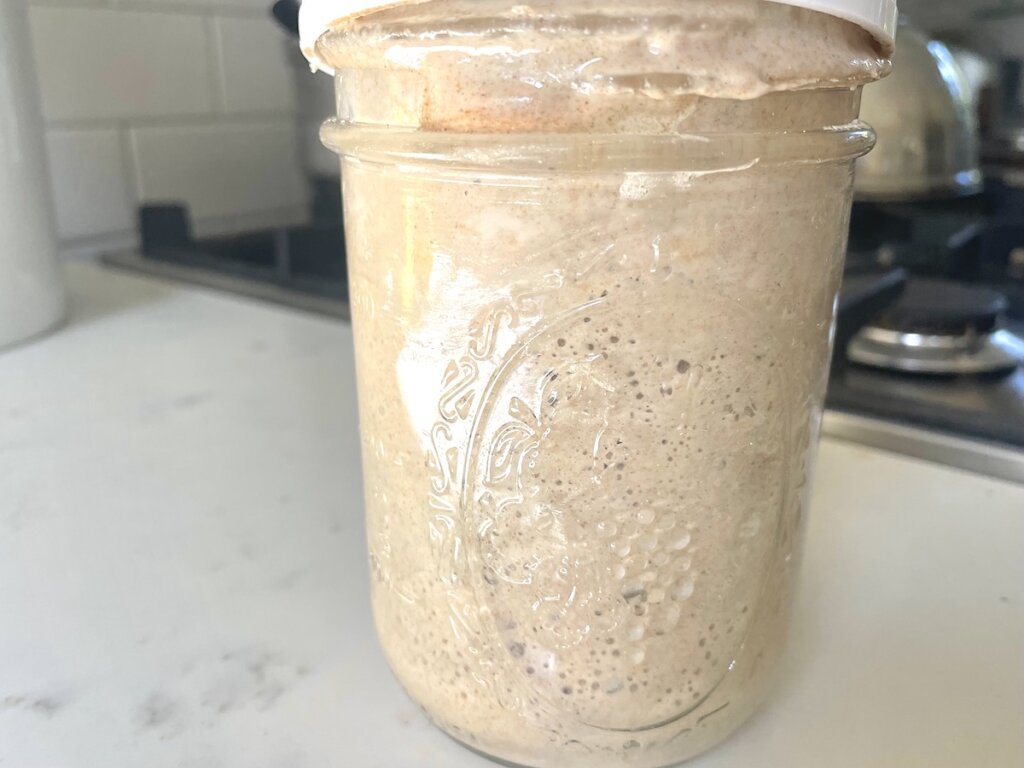
How to dehydrate a sourdough starter
It is a simple process, regardless of the method you are using (I’ll discuss that below). For best results, I recommend starting with a very ripe, active sourdough starter at its peak activity. All you need to do is
- Place a sheet of parchment paper or a silicone mat on a baking sheet, a cutting board, or the tray of a food dehydrator
- Pour your active starter onto the parchment paper or silicone mat
- With a rubber spatula or big spoon, spread the sourdough starter evenly and in a thin layer
- Using your preferred method, watch the sourdough starter until it is completely dehydrated
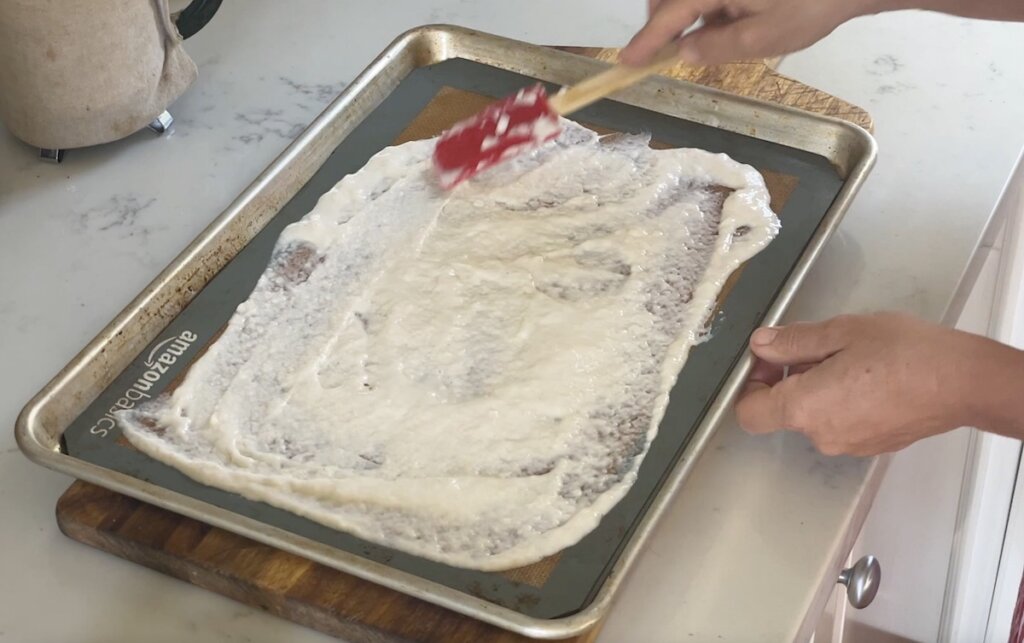
Different dehydration methods:
- Using your oven: Depending on your specific model, you have some options here. In my oven, I simply turn the baking mode knob to convection. That turns on the fan and the light bulb in the back of the stove. That creates enough airflow and warmth for dehydrating my sourdough starter. If your oven goes to less than 90˚F, you can use that setting. You DO NOT want to bake your starter and kill off all the active cultures.
- Using a food dehydrator: You can simply place the starter in your dehydrator and set it to no more than 80˚-90˚F.
- Using a place near a heater: Finding such a warm spot in your home is a great alternative. That can be by a space heater, free-standing gas heater, or something like that.
- Simply using room temperature: Air drying simplest method but also the one that takes the longest.
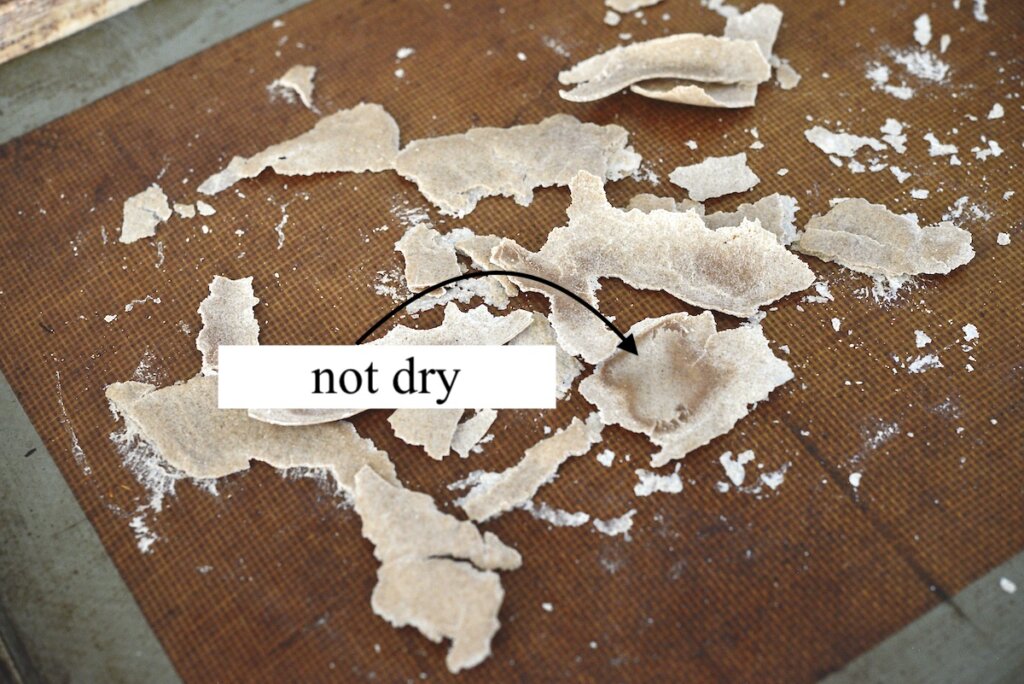
You have dehydrated your starter – now what?
Before you proceed, make sure that your starter is completely dehydrated. By that, I mean that there are no moist spots left. It should be flaky and bone-dry.
Now:
- Take a glass jar or another airtight container. You can simply break the flakes of dehydrated sourdough starter into small pieces and place them in that jar. Close the lid.
- Alternatively, you can grind your dried starter into a more or less fine flour. You can do that in a high-speed blender, in a food processor, or in any other blender. You could even place the dry starter in a ziplock bag and roll it into as fine a flour as you like.
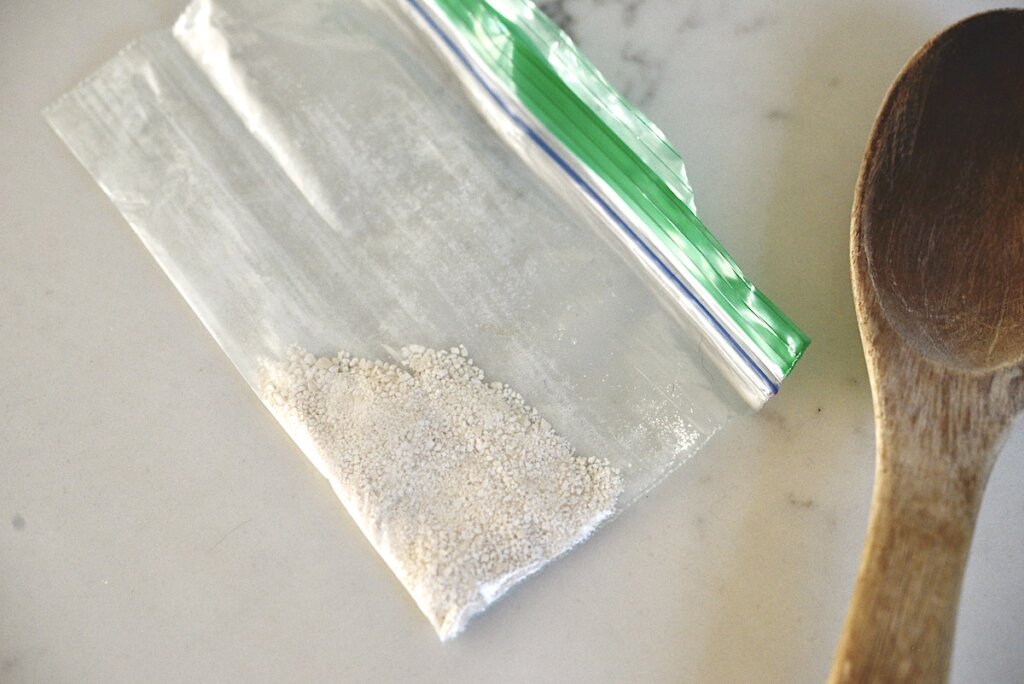
How to keep your dehydrated starter?
Now, you have your dry sourdough starter either in an airtight container or a small plastic bag (ziplock bag). For your long-term storage solution, I recommend keeping it in a cool and dark place. Obviously, if you’re sending it in the mail, this is out of your hands. But I am sure that your dehydrated starter will be fine.
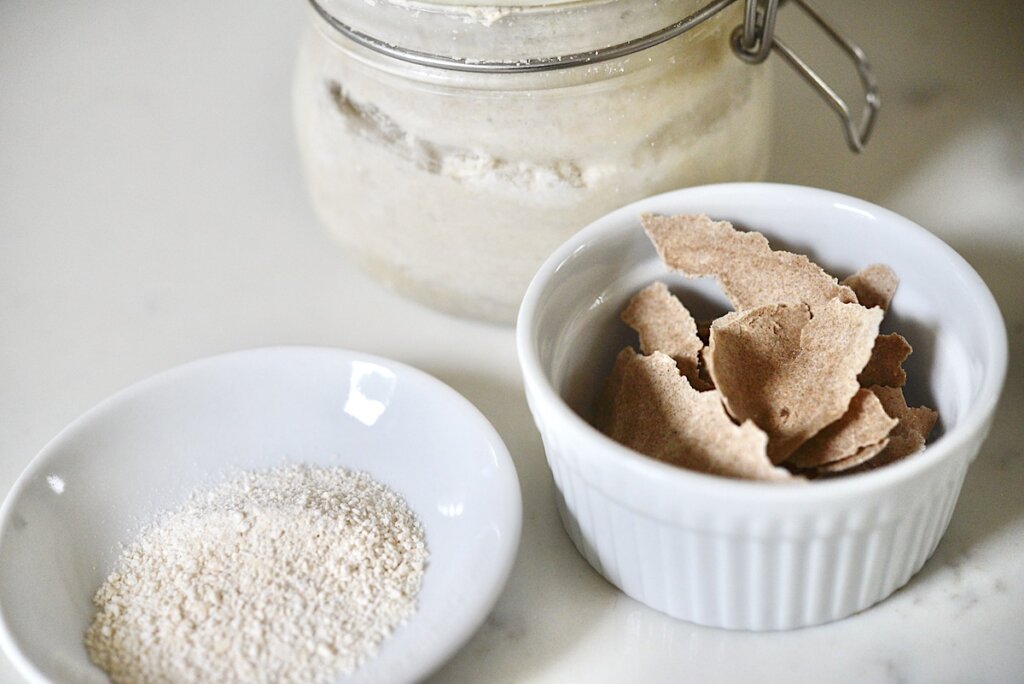
How to rehydrate your dry starter?
To get the fermentation process going again, do this:
- Place about 1-2 tsp of dried starter in a jar.
- Wet the starter with enough warm water to create a paste. If you are using flakes, be sure to push them all down with a spoon. You want all of the flakes submerged in water. Let this sit in a warm spot (ideal) or at room temperature for a few hours.
- Do your first feeding with equal parts of water and fresh flour. You can use 20 g of flour and 20 g of water. It will take less time to reactivate it if you use whole wheat flour or rye flour. Stir.
- Keep this in a warm spot until you begin seeing air bubbles. You can now continue with daily feedings or your preferred method.
Can you bake sourdough bread with this rehydrated starter?
This depends on many variables such as how active your starter was before you dehydrated it, the temperature, humidity, and resident wild yeasts in your home. However, as an “insurance policy,” it is a good idea to add some commercial yeast to your first bread.
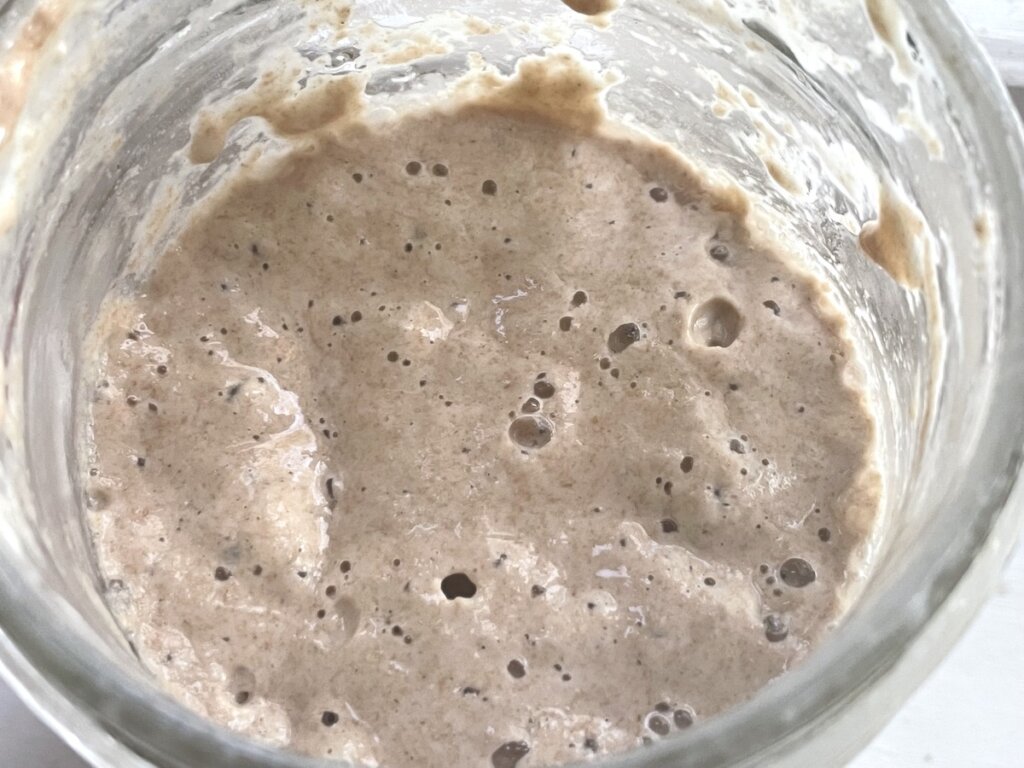
Questions and potential problems:
How long does dehydrated sourdough starter keep?
Theoretically, it should keep forever. Since I haven’t lived that long, I can’t tell you from my own experience. But it will definitely keep for a very long time.
How long is the drying process?
That depends on your starter, your method, and how thinly you spread it out. When I use my oven method it took about 12 hours for the entire starter to be completely dry. It might take up to a few days if you’re drying it at room temperature.
How long does it take to get an active starter after rehydrating?
Again, this amount of time depends on the variables I mentioned above. You could get some activity and bubbles as early as the next morning. However, it might take a few days and some regular feeding to get a nice mature starter. Remember that you can speed up this whole process by feeding your new starter with whole wheat or rye flour.
What to bake first with a rehydrated starter?
If you’re not sure whether your starter has come back nicely from its dormant state, you could bake something small just to test it. Sourdough waffles, sourdough crackers, or English muffins might be a good start.
How else can you use your dried sourdough starter?
Especially if you have ground your dry starter into powder form, you can simply add it to your sourdough recipe. In that case, subtract the amount of starter you’re adding from the total amount of flour you are using. That will give your bread a nice sourdough flavor without having to go through a lengthy fermentation time.
Is it better to keep the dry starter in flakes or turn it into a fine powder?
If your goal is to keep the sourdough starter for a long time, then it doesn’t matter. Obviously, skipping the grinding of the flour saves you a step. If on the other hand, you’re thinking about adding the dried starter to baked goods, a powdered starter may be your answer.
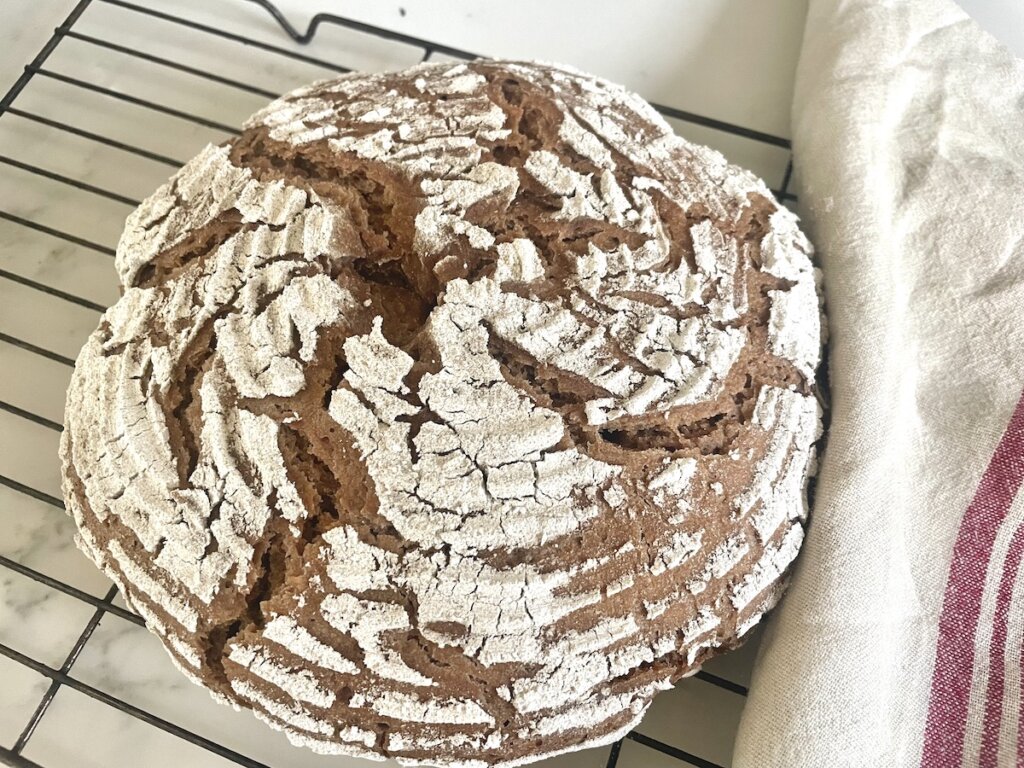
Other Sourdough Posts You Might Like:
Easiest Way to make a Sourdough Starter
Keep Your Sourdough Starter | No Discards, No Feedings
Make a Gluten-Free Sourdough Starter
Some of Our Favorite Sourdough Recipes:
Artisan No-Knead Sourdough Bread
How To Make a Sourdough Lemon Cake
Sourdough Carrot Cake with Maple Cream Cheese Frosting
Chicken and Sourdough Dumplings
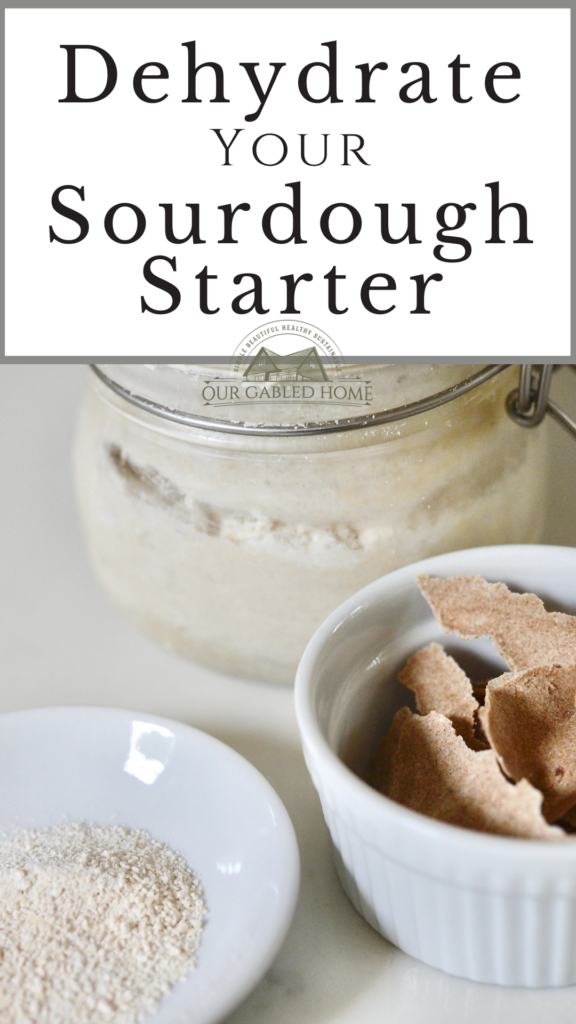


Anja Thank you again. I will place this in my Bookmarks for later use. Fortunately
I have SUPER BAKING FRIENDS. Started my Sourdough Journey September
2016. Later LOST it (I did mention this before) and my friend in California sent
me a replacement.
Nice! Happy baking ~ Anja